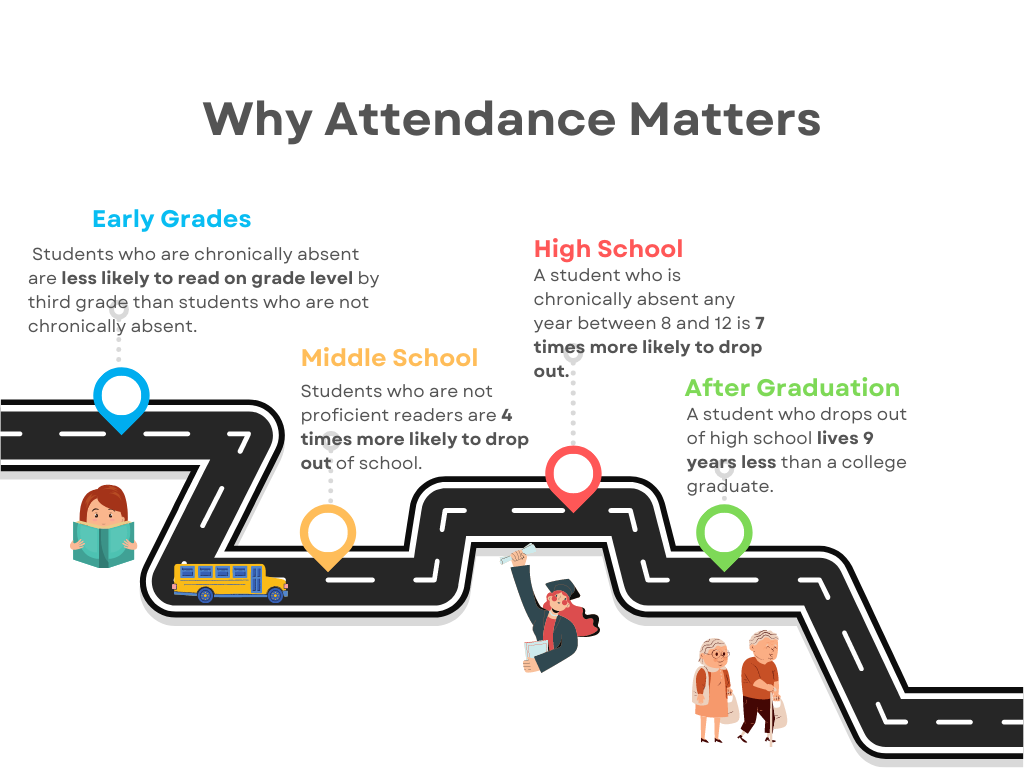What is the Chronic Absence Problem?
Nearly 48,000 Maine students missed more than 10% or their enrolled school days during the 2021-2022 school year putting them academically at-risk. Chronic absence, missing 10% or more of school due to absence for any reason - excused or unexcused - means students are less likely to read proficiently by third grade, more likely to fail in middle school and eventually drop out of high school. Missing school, even in kindergarten, has consequences.

Absenteeism, starting in preschool and elementary school, is an early warning sign for subsequent school problems. Unfortunately, chronic absenteeism is frequently overlooked because schools and communities track only “unexcused” absences, known as truancy, and too often focus on legal or punitive solutions.
Chronic absence can be solved when schools, families and communities:
- work together to create a culture of attendance as early as preschool and kindergarten
- monitor student attendance
- identify and address the barriers to getting to school
If you are interested in learning more about the impact of chronic absenteeism, start by reading For Young People to be College- and Career-Ready, Student Attendance Matters written by South Portland Superintendent Ken Kunin, RSU 57 Superintendent Larry Malone and Count ME In Director Susan Lieberman and published in the Portland Press Herald.
Visit our Research page for links to Maine data, policy briefs, and national research.
Feeling unclear about the definitions and legislation surrounding attendance, visit Truancy vs. Chronic Absence.
Looking for an interactive training reviewing terminology, rules and regulations, and the impact of chronic absenteeism, sign-up for our introductory one-hour training, Attendance Matters - The Basics.
